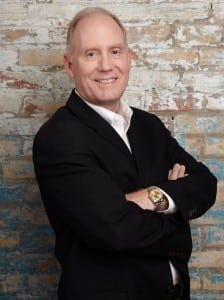
Founder and President
Spong PR
As we head into 2015, what do you think will be keeping you up at night? “Mr. Gorbachev, tear down this wall.” That’s what wakes me up in a cold sweat. Who knew that 25 years after the Berlin Wall came down, the entire communications industry would begin tearing down its own walls of demarcation? We’re no longer obsessed with defending our traditional territory of earned media and conceding paid, owned and shared to advertising, digital and social-only agencies, respectively. Success today for both agency and corporate pros requires blurring the lines between disciplines and no longer distinguishing advertising as ‘What you pay for’ and PR as ‘What you pray for.’
What were some of the obstacles in your career? How did you overcome them? The obstacles for newbies to grow their careers are the same obstacles for grizzled veterans to sustain their careers. Failure to deliver value for your employer, your client and your work team will kill you professionally every time. Follow the money. The closer you are to producing revenue, attracting more revenue and trimming expenses, the more valuable you are as a professional. Never think of yourself as overhead expense.
How does one become a PR leader? Despite the popular notion that some people are born leaders, true leadership is a learned and developed behavior. Leadership involves stepping out of your comfort zone, embracing change and doing things differently. It takes curiosity and an eye for invention; personal skills development throughout your career; a never-say-die commitment to defending the moral high ground; and avoiding the trap of using others’ definitions of best practices as your high-water mark for strategies and ideas. Good PR leaders have a healthy gag reflex to ideas that have been reheated so many times they’ve lost all taste.
What are the key lessons you teach your team when it comes to growing relationships with the media? First, it’s a relationship, not a transaction. It’s called media relations because of the root word in relationship. While you can get away with anything once in life, you will ruin any chance for an ongoing relationship with a reporter, editor, et al. if you violate their trust or make it difficult for them to do their job. Second, the early bird gets the worm. The faster you return their call or reply to their email the more likely you are to influence a great outcome with the story.
As one newspaper columnist told me 30 years ago when asked why a particular source was constantly quoted in his piece, ‘Because he’s the first to call me back and unafraid to talk to me.’ Lesson learned.
Who has had the biggest influence on your PR career? Two people. The first was Tommy Thompson, former chair-CEO of Colle+McVoy during my first nine years in PR. Tommy loved working with young people and teaching the ways of the business world. He was a big personality with a playful sense of humor and enormous capacity to overlook beginners’ mistakes. The other huge influence on my career is my long-time partner Lee Lynch. Lee taught me that you spend the majority of your waking hours as an adult at work, so you have to make it fun for yourself and others around you
This year your agency rebranded to Spong. What were the biggest PR challenges during the transition? Since many hands make for light work, I assembled a large team of roughly 25 professionals representing diverse departments across the agency. The biggest PR challenges were answering the obvious question in any brand refresh—why the name change?—and making sure that once the fireworks went off and the smoke cleared, that we created an enduring interest in Spong among our key stakeholders.
CONTACT:
Doug Spong, [email protected].
This article originally appeared in the December 15, 2014 issue of PR News. Read more subscriber-only content by becoming a PR News subscriber today.
